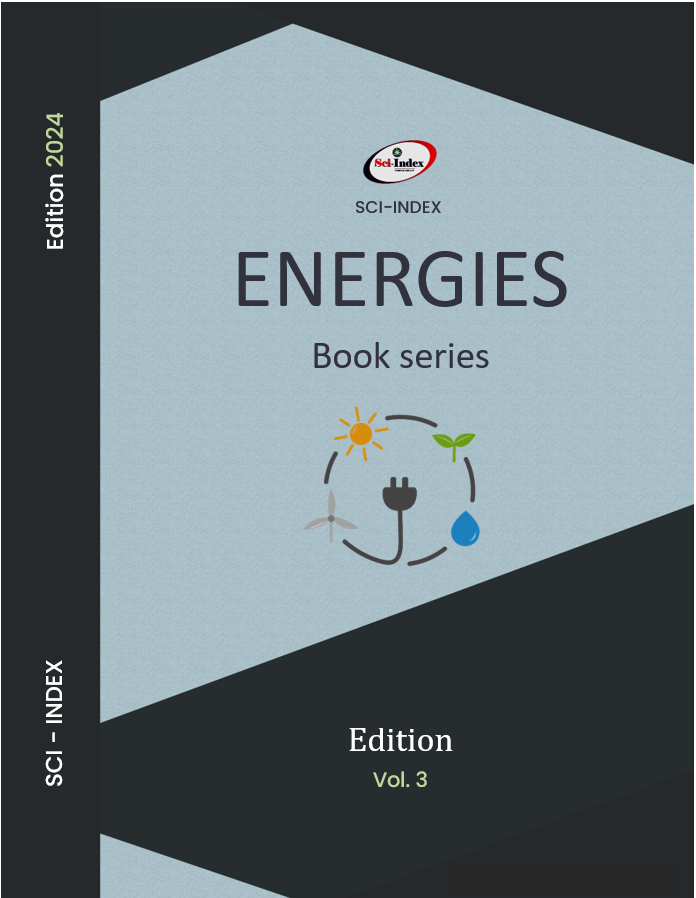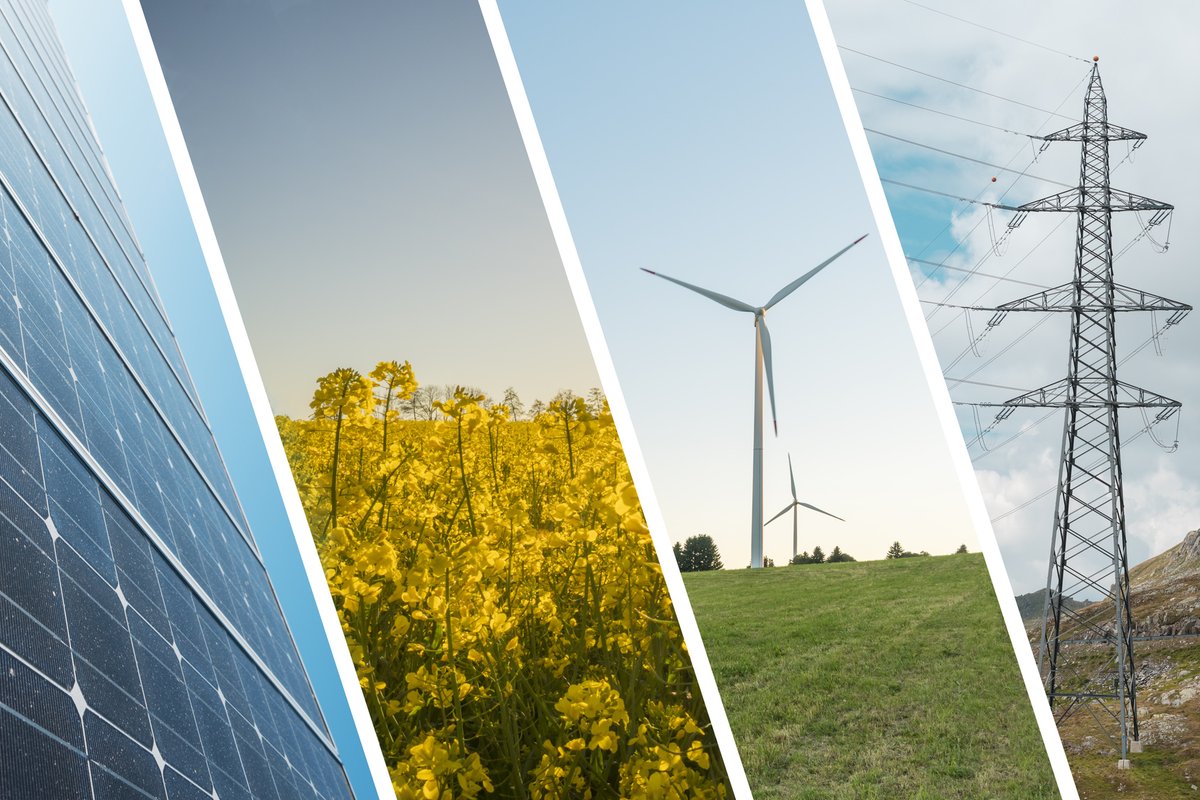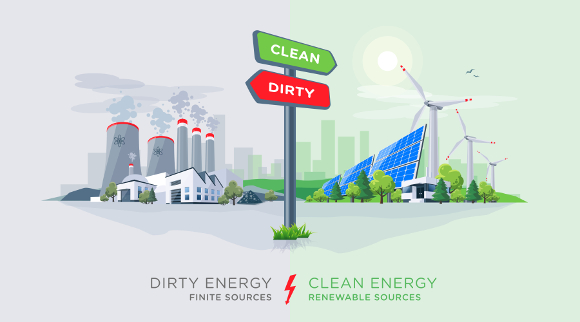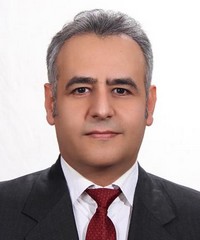Energies Book Series
About
Energies is a peer-reviewed, open access book series which publishes monographs and state-of-the-art expository works which focus on issues regarding innovative technologies that improves the efficiency of resource and energy utilization. Some of the topics covered in the series are energy systems, energy production, alternative and renewable energy supply, energy savings analysis, cleaner production, optimization of energy processes and the environmental impacts.
The energies book series is compiled and published annually in two volumes.
British Library ISNI: 0000000506803928 | (ISO 27729).
Sci-Index Publications, London, United Kingdom



Subject Areas and Keywords
For Authors
Managing Editor: Hyun J.M. Wu
Publishing Manager: Xiao M. Lin
Energies Book Series Contact
Editorial Office: 71-75 Shelton Street, London, Greater London United Kingdom, WC2H 9JQ
Email: Energies@sci-index.com
Dr. Lipo Wang
UM-SJTU joint institute, ShangHai JiaoTong University, China
Interests:
Fluid mechanics, fundamental turbulence (flow structure and topological analysis), turbulent combustion and some application-orientated problems.

Pr. Mohamed Khayet
Department of Structure of Matter, Thermal Physics and Electronics Faculty of Physical Sciences, University Complutense of Madrid, Spain
Interests:
Membranes and Renewable Energies – Membrane science and nanotechnology – Desalination – Water treatment – Nanostructured membranes – nanofluids – Nanofibers – Hollow fibers – Polymeric materials – Water separation technologies – Thermal conductivity – Solar Energy – Heat and mass transfer – Energy conversion and efficiency

Dr Alan M L FONG
Deputy AScBSE Program Leader, CSE, City University of Hong Kong
Interests:
Thermal comfort achievement through various ventilation methods, Smoke control system analysis in large volume building, Chiller optimization through data analysis, Life cycle assessment of building system

Dr. Liuwang Kang
Department of Computer Science, University of Virginia, USA
Interests:
Intelligent transportation systems and autonomous driving with focuses on driving safety, security and privacy analysis.

Pr. Mohammad Ferdows
Department of Applied Mathematics, University of Dhaka, Bangladesh
Interests:
Fluid flow: Mathematical Modeling and Simulation

Pr. Lutfu S.Sua
Southern University and A&M College, LA, USA
Interests:
Green buildings, renewable energy systems design and optimization of renewable energy systems

Dr. Mohsen Saffari Pour
KTH Royal Institute of Technology, Stockholm, Sweden
Interests:
Thermo-Fluid Processes, Thermodynamics, Heat Transfer (Conduction, Convection, and Radiation), Alternative Fuels, Computational Fluid Dynamics (CFD), Modeling and Numerical Simulation of Combustion and Pollutants Emissions, Turbulent Reacting Flows, Design and Optimization of Industrial Boilers and Furnaces.

Dr. Renato Somma
CNR-IRISS – ISMAR | National Institute of Geophysics and Volcanology Vesuvian Observatory, Italy
Interests:
Geochemistry, medical geology, volcanology, geophysics, geothermal energy, resilience of inhabitants in volcanic areas, and mitigating volcanic risk.

Pr. Hab Inż Magdalena Dudek
AGH University of Science and Technology, Faculty of Energetics and Fuels, Poland
Interests:
Solid electrolytes , materials engineering

Dr. Lucas Gaston Rodriguez
National University of the South. Bahia Blanca, Argentina
Interests:
Building energy efficiency. Didactics of architecture and energy.

Dr. Mukhtar Abdulkadir
Head of Chemical Engineering Department, School of Infrastructure, Process Engineering and Technology (SIPET), Federal University of Technology, Nigeria
Interests:
Multiphase flows, computational fluid dynamics (CFD) and flow assurance

Pr. Mohamad Alaaeddin ALALI
National School of Electronics and its Applications (ENSEA), France
Interests:
Power quality improvement in the electric power distribution networks, industrial zones modeling and simulation, and improving the performance of active filters with renewable energy generation using linear and nonlinear control methods, fast-switching power electronics, multilevel inverters topologies.

Dr. Matcha Murali
Electrical Engineering department at Medi-Caps University, Indore, MP, India
Interests:
Power System Optimization, Power System operation and control, Renewable energy technologies and Restructured Power Systems.

Dr. Moustafa Sanad
Chemical & Electrochemical Processing Department, Minerals Processing Technology Division, Central Metallurgical R & D Institute (CMRDI), Egypt
Interests:
Green fabrication, energy storage applications, advanced engineering nanocomposites

Pr. Mohammad Mehdi Rashidi
Institute of Fundamental and Frontier Sciences, University of Electronic Science and Technology of China
Interests:
CFD. Heat and Mass Transfer, Micro-fluidics; Thermodynamics; Fluid Mechanics

Dr. Maaz Khan
Pakistan Institute of Nuclear Science and Technology (PINSTECH), Pakistan
Interests:
Fabrication of nanomaterials and their structural, optical and magnetic characterizations.

Dr. M.H. Eisa
Department of Physics, College of Science, Imam University, Saudi Arabia
Interests:
Application of Ion-beam Technology in Material Science and in Biomedicine Science, Nanotechnology, Carbon Nanotubes, Computational Physics on superconductors

Mohammed Hedayet Ullah Bhuiyan
School of Engineering, RMIT University, VIC, Australia
Interests:
Applications of nanofluids in heat transfer performance including renewable energy, thermal energy storage, heat exchangers and electronics cooling.

Submission GUIDELINES
Energies Book Series will offer a variety of publication category, including monographs and state-of-the-art expository works which focus on issues regarding innovative technologies that improves the efficiency of resource and energy utilization.
Two publication formats are considered: full or short chapters (Papers).
Full chapters/papers are limited to 8 pages and short chapters/papers are limited to 4 pages.
Full chapters are for mature work, requiring lengthy explanations of the conceptual background, methodology and data and analysis.
Short chapters are for work that makes significant contributions, but that is still in progress, of smaller scale, or that can be reported briefly. Otherwise, the same criteria apply as listed for full chapters above except that the number of pages must not exceed 4 pages.
The paper language must be in English.
Chapter/Paper book should state:
Chapter/Paper book should follow the instructions on the following template:
Fast Publishing Process
Notification within 21 days
Submitted manuscripts are peer reviewed and acceptance/rejection notifications are sent to authors within 21 days of submission, with suggestions for rounds of revisions.
Chapter/Paper publication within 15 days
All final accepted chapters/Papers are published online within 15 days of final acceptance notification.
Typesetting & Indexation
All chapters/Papers are copy-checked and typesetted before being published. Sci-index regularly submits its books to major databases for evaluation and coverage. Each chapter will be assigned a doi and ISNI and submitted for indexation.

Open Access
The chapter/paper will be published online in two different formats – pdf and html. It will be open access, freely available to the public and the authors will retain the copyright of their work. Authors receive the Creative Commons Attribution (CC BY 4.0) licensing arrangement.
Citations & Statistics
The authors can monitor the download and citation statistics of their chapters/Papers, which are available below the abstract of each chapter/paper.
eBook
Also, all the authors will receive the eBook in pdf format. We will send it to the author for correspondence and it is the responsibility of the corresponding author to share it with the co-authors.
Submit your chapter/paper book
Authors are invited to submit their submissions chapters/papers book using the following submissions system
ONLINE
SUBMISSION SYSTEM
In case you have issues then send your submission using our email:
energies@sci-index.com
Open Access Fees and Funding
The publishing fee for each book chapter/paper is 250 GBP. There are no taxes for the authors or any other hidden fees
How is the fee paid?
The author for correspondence of each book chapter is responsible for making, or arranging, the payment (for example, via the institution).
An invoice will be issued to the author for correspondence after the editorial acceptance of the chapter with instructions for payment
Why is a fee charged?
A fee is charged to cover the costs of book production and making it freely available to the public. The typical costs associated with the production of a book include book processing, unrestricted free open access, technology and post publication activities
Book processing:
Receiving book proposals, preliminary check of manuscripts to ensure adherence to guidelines, plagiarism check, communicating between authors/editors, organizing peer review, receiving revised manuscripts, copyediting, implementing corrections by authors, type setting, layout editing, proof reading, graphic design, cover design, reference checking, indexing, file conversion, adding metadata to agreed industry standards, purchasing ISNI and handling, and project management
Unrestricted free open access:
All publications are freely available to the public.
Anyone with an access to internet can access, read, and download the chapters without any restrictions.
Technology:
Online presence requires a publishing platform, hosting, necessary security features and email services.
Post publication activities:
Permanent preservation using service providers, applying for indexing in various repositories, book promotion, marketing and continued online presence.
Published Chapters/Papers
Energies Book Series – volme in Progress
published chapters/papers are from regular book volumes and selected best papers from conferences’ special issues.
Study of the La 1.65Nd 0.2Ce 0.15CuO 4±δ system: Redox reaction via CaH 2 and oxygen
Mohamed Ikbal Houchati, Nassira Chniba-Boudjada and Ahmed Hichem Hamzaoui
Energies Book Series – Vol. 24-01
Abstract: The study outlines the process of mixing La 1.65Nd 0.2Ce 0.15CuO 4 with CaH 2 at 200 °C, resulting in the formation of a new phase termed La 1.65Nd 0.2Ce 0.15CuO 3.5, referred to as “pseudo-S”. This phase adopts a monoclinic crystal structure with the space group A2/m, characterized by specific cell parameters: a = 8.6189(6) Å; b = 3.8446(5) Å; c = 13.0114(9) Å; β = 109.690(2) °. The successful utilization of electropositive metal hydrides, such as CaH 2, as reducing agents is demonstrated in this process. Upon oxidation of the obtained phase in an oxygen atmosphere above 400 °C, it transforms into the intermediate phase T’-La 1.65Nd 0.2Ce 0.15CuO 4 […]
Possible ways to improve the efficiency of the Rosch innovation perpetual motion machine
Torchigin V.P.
Energies Book Series – Vol. 24-01
Abstract: We present our understanding of the physical phenomena on which the Roche Innovation perpetual motion machine is based. It is shown that the excess energy required to operate the machine is nuclear, arising from oxygen in air bubbles. At the same time, such a machine is useless, since its power is very expensive. Ways to increase the efficiency of the Rosch Innovative perpetual motion machine are discussed. Alternative installations based on the same principles are presented. […]
The Effects of The Transient and Performance Loss Rates on Pv Output Performance
Chibuisi C. Okorieimoh, Brian Norton and Michael Conlon
Energies Book Series – Vol. 22-01
Abstract: Solar photovoltaic (PV) panels experience long-term performance degradation as compared to their initial performance, resulting in lower like-per-like efficiencies and performance ratios. Manufacturers of solar photovoltaic modules normally guarantee a lifespan of more than 20 years. To meet such commitments, it is important to monitor and mitigate PV module degradation during this period, as well as beyond, to recognize maintenance and repair needs. Solar PV modules degrade over time […]
Synthesis, characterization and solution properties of polyacrylamide based ternary copolymerization modified nano silica nanocomposites for EOR
Dongyin Wang, Changfeng Chen, Yangchuan Ke and Jixiang Wang
Energies Book Series – Vol. 22-01
Abstract: In this work, a series of polymer nanocomposites (AAS/KS) of acrylamide (AM)/ acrylic acid (AA)/ sodium p-styrenesulfonate (SSS)/ 3-Methacryloxypropyltrimethoxysilane (KH570) modified nano-silica were successfully synthesized via in situ polymerization. The 1H nuclear magnetic resonance spectroscopy ( 1H NMR) confirmed the successful synthesis of AAS/KS, the morphology of KH570 modified nano-silica (KS) and AAS/KS polymer nanocomposites were observed by scanning electron microscope (SEM) […]
Energy and Typological Building Characterization of the Social Housing Stock in Southern Spain
C.M. Calama-González, Á.L. León-Rodríguez and R. Suárez
Energies Book Series – Vol. 22-01
Abstract: Retrofitting buildings is key for meeting 2030 and 2050 energy efficiency targets, especially for existing residential buildings, which are expected to become a large proportion of the future stock. Prior to promoting energy saving measures, an extensive analysis of the current performance of the stock should be tackled. Thus, building characterization though a statistical approach is a necessary step in order to assess this stock under real variability conditions, instead of considering average fixed values […]
Sustainability Aspects in Seismic Performance of Confined Masonry Structures: A Review
Sami Ullah and Majid Ali
Energies Book Series – Vol. 22-01
Abstract: The brick masonry structures are mostly used in the construction industry for building up to two stories in the world. The unreinforced brick masonry structures performed not well during past earthquakes, which causes economical and human life losses. Confined brick masonry structures are proposed as reinforced brick masonry structures, which are now mostly used in developing countries. The seismic performance of the confined brick masonry structure is very important to withstand the structure while hit by the strong ground motion of earthquakes to reduce the economic losses as well as losses to human lives […]
Numerical Modeling of Heat Flow of KangdingArea with New Borehole Data for Purpose ofGeothermal Resources Development Evaluation
Chao Zhang, Ming Wu and ZaoBao Liu
Energies Book Series – Vol. 22-01
Abstract: Terrestrial heat flow is a surface indicator of potential geothermal resources in depth, and its measurement and compilation are important for evaluating the merits of geothermal resources. The Kangding area locates in the western Sichuan Province of China where regional thermal fractures develops showing good potential for geothermal energy development but with barely precise heat flow data. We collect the borehole temperature data from the geological survey report of the Sichuan-Tibet Railway that passes through […]
Intensified extractive distillation process for the separation of n-heptane-toluene mixture using the ionic liquid 1-Ethyl-4-methylpyridinium Bis(trifluoromethanesulfonyl)imide
Fadia Guella and Hassiba Benyounes
Energies Book Series – Vol. 22-01
Abstract: Ionic liquids (ILs) have emerged in recent years as promising green solvents to replace conventional solvents. This work aims to the separation of n-heptane-toluene mixture by extractive distillation using ionic liquid (IL) to enhance the performance of the process. The ionic liquid [4EMPy] [NTF 2], “1-ethyl-4-methylpyridiniumBis(trifluoromethanesulfonyl)imide”, was proposed due to its high selectivity compared to the conventional solvent “Sulfolane”. The calculation of the VLE of n-heptane-toluene mixture […]
A Review on Durability Methods for Natural Fibers in Polymer Matrices from Sustainability Aspects
Blawal Hasan and Majid Ali
Energies Book Series – Vol. 22-01
Abstract: The researchers around the globe are working hard to develop new material which would improve the quality of product environmentally, as this world needs eco-friendly materials. This article gives a critical review of the treatment methods/techniques that can improve durability for natural fibers in polymers. The natural fibers are very low cost as compared to other fibers and having specific high properties. These natural fibers are not abrasive and can biodegradable. The natural fiber polymer proffers certain properties […]
Modeling and Finite Element Validation of a Wind Turbine with a Direct Drive Permanent Magnet Synchronous Generator
Henda Zorgani Agrebi, Naourez Benhadj, Mohamed Chaieb and Rafik Neji
Energies Book Series – Vol. 22-01
Abstract: In this paper, the analytical modeling of a wind turbine conversion chain is carried out according to multi-physical disciplines of the system. The chain represents a 3 bladed horizontal axis wind turbine coupled directly to a permanent magnet synchronous generator PMSG delivering power in a battery through diode rectifier. For the considered chain, four models are developed. Mechanical model describes the power generation from kinetic movement of the wind to its transmission to the generator […]
A Linguistic MCDM Framework for Sustainable Agriculture Design
Gülçin Büyüközkan and Deniz Uztürk
Energies Book Series – Vol. 22-01
Abstract: In the direction of being sustainable, agriculture must satisfy the necessities of present and future generations while guaranteeing expediency, ecological health, and social and economic equity. Therefore, concerning only the environmental or the economic aspect of the agricultural development is not enough to satisfy the issues stated above. The social, economic, and environmental aspects of the agricultural transition are crucial. One cannot be separated from others […]
Impact of window wall ratio in office building envelopes on operational energy consumption in the temperate climatic zone of India
Deepali Sahu, Pradeep Kini, Pranav Kishore, Anir Upadhyay and Kiran Kamath
Energies Book Series – Vol. 22-1
Abstract: The construction of predominantly glazed facades in commercial buildings has become a standard practice in India irrespective of the climate and in particularly in cities such as Bangalore, an Indian IT hub with temperate climate. In recent decades, urbanisation has been rapid and fully glazed buildings have increased, resulting in high energy consumption and demand. The development and implementation of energy efficiency codes and initiatives can help ensure a sustainable future […]
A low-budget mathematically scalable sensor solution to reduce energy consumption in buildings
Robinson Adrián Barrazueta Paccha and José Raúl Castro Mendieta
Energies Book Series – Vol. 21-01
Abstract: Reducing the consumption of electrical equipment such as air conditioning and lighting in buildings is a challenge around the world. Sensor-based control systems supported by intelligent, adaptive mathematical algorithms can control electrical equipment optimally to save energy and maintain user satisfaction. The system combines PIR sensors, low-consumption temperature and lighting sensors that analyze the characteristics of the environment and allow efficient control decisions to be made in electrical equipment such as air conditioning and […]
Optical Analysis for a Honeycomb Solar Receiver Using a Point-Focus Concentrator
N. Aracely Cisneros-Cárdenas, Rafael E. Cabanillas-López and Ricardo A. Pérez-Enciso
Energies Book Series – Vol. 21-01
Abstract: In this work we present an optical analysis for three different hydraulic diameter honeycomb receivers used to elevate working fluid temperature using concentrated solar radiation provided by a point-focus solar concentrating system. The analysis was carried out in order to determine the amount of concentrated solar radiation received in the volumetric receiver as well as the radiation distribution inside of it, also to determine the length of it. The study which determines the location of the receiver in the optical axis of the concentrating system is also presented […]
A comparative study of Li-ion batteries thermal behavior with different geometries, capacities, cathode materials
Khalid ZIAT, Hasna LOUAHLIA and Hamid GUALOUS
Energies Book Series – Vol. 21-01
Abstract: Li-ion batteries are nowadays widely used in electric vehicles, portable devices and smart grids. They are commercialized in different geometries, capacities and serval technologies depending on users’ requirements. During operating time, heat is generated inside Li-ion batteries due to chemical reactions which causes temperature rise. Non-controllable thermal behavior of these batteries may lead to the deterioration of their performance and may also cause a thermal runaway. In this study […]
Description of Colombian Electricity Pricing Derivatives
S. Prabakaran
Energies Book Series – Vol. 21-01
Abstract: Electricity markets are becoming a popular field of research amongst academics because of the lack of appropriate models for describing electricity price behavior and pricing derivatives instruments. Models for price dynamics must consider seasonality and spiky behavior of jumps which seem hard to model by standard jump process. Without good models for electricity price dynamics, it is difficult to think about good models for futures, forward, swaps, and option pricing […]
Identification of wind energy deployment determinants: Fuzzy cognitive map-based method
Sara Ghaboulian Zare, M. Alipour, R. Parsaei Tabar and Mehdi Hafezi
Energies Book Series – Vol. 21-01
Abstract: Wind energy is undoubtedly an essential generation source required to achieve a transformative renewable energy supply portfolio. However, long-term sustainable wind energy deployment faces various challenges due to various complex interconnected impediment factors. These inherent endogenous and exogenous uncertainties preclude obtaining an accurate future trend, which complicates the design of a good policy. This study seeks to critically identify all the involved parameters that contribute to the future […]
Research on Mud Loss Prevention and Control for Deep Wells with Complex Pressure System in Mingebrak Oilfield, Uzbekistan
Wanjun Li, Qi Liu, Huifeng Liu, Yong Wang, Shujiu Feng, He Ba and Yue Xiao
Energies Book Series – Vol. 21-01
Abstract: characterized by big burial depth (5200-6500m), high temperature (150-200℃), high pressure (pressure coefficient 2.08-2.41), high salt content (220000mg/l), and high H2S content (5~6%) in the formation fluid. The Musgothic formation is especially complex because it contains different pressure systems. Leakage and blowout are easy to occur during well drilling and the average drilling period is 732 days. The data of well drilling history have been analyzed and the causes of the long drilling period have been detected […]
Numerical simulation of highly-efficient lead free tin-based perovskite solar cell with Sb 2S 3 as novel hole transport layer
Most. Marzia Khatun, Sabrina Rahman, Adnan Hosen, Md. Nur Hossain Riyad, Adil Sunny and Sheikh Rashel Al Ahmed
Energies Book Series – Vol. 21-01
Abstract: This work reports the performance enhancement of lead free perovskite solar cell (PSC) with Sb 2S 3 as a novel hole transport layer (HTL) numerically by using Solar Cell Capacitance Simulator in One Dimensional (SCAPS-1D). Three different HTLs such as Sb 2S 3, Spiro-OMeTAD, and CuI are introduced into the conventional CH 3NH 3SnI 3-based solar cell configuration consisting of Al/FTO/WS2/CH 3NH 3SnI 3/Sb 2S 3 or Spiro-OMeTAD or CuI/Ni […]
Integration of vanadium redox battery with PV systems: Modeling and simulation of Vanadium Redox flow batteries based on MATLAB/Simulink
Mohamed-Amine BABAY, Mustapha ADAR and Mustapha MABROUKI
Energies Book Series – Vol. 21-01
Abstract: Several models have been developed and they are now providing a good understanding of how VRB works. This knowledge is very important to evaluate its performance when applied in an electrical system. This article presents a new VRB model based an electrical equivalent model of VRFB, the effect of flow rate and pump power losses has been considered in modeling the VRFB. The VRFB is connected to a resistive variable load, for discharging and a system PV for charging […]
Effect of surfactants on morphology and textural parameters of silica nanoparticles derived from paddy husk and their efficient removal of methylene blue
Himasha Gunathilaka, Charitha Thambiliyagodage, Leshan Usgodaarchchi and Sajeevan Angappan
Energies Book Series – Vol. 21-01
Abstract: Effective removal of textile dyes is important in environmental remediation especially for decontamination of wastewater. Herein, we report the synthesis of mesoporous silica nanoparticles (MSNs) from paddy husk with varying concentrations of surfactants, Cetyltrimethylammonium bromide (CTAB), and Polyethyleneglycol (PEG) by sol-gel synthesis method. Ratios of the surfactants CTAB: PEG were varied as 2:0 (MSN1),1:1 (MSN2), 0:2 (MSN3). MSNs were characterized by scanning electron microscope (SEM), Brunauer-Emmett-Teller surface area analyzer (BET), Thermogravimetric analyzer (TGA), and X-ray diffractometer […]
Effect of Banana fibers on the enhancement of compressive toughness of Reinforced Concrete Columns –A Review
Muhammad Abrar and Majid Ali
Energies Book Series – Vol. 21-1
Abstract: Fibers have been used in concrete by different researches since a few decades. Natural fibers are widely used as additive material in concrete to enhance the strength and mechanical properties of concrete. It has been observed that by using fiber reinforced composite (FRC), the weight and manufacturing cost can be reduced. The purpose of this study is to find out the flaws in reinforced concrete (RC) columns regarding compressive toughness and their remedial measures […]
